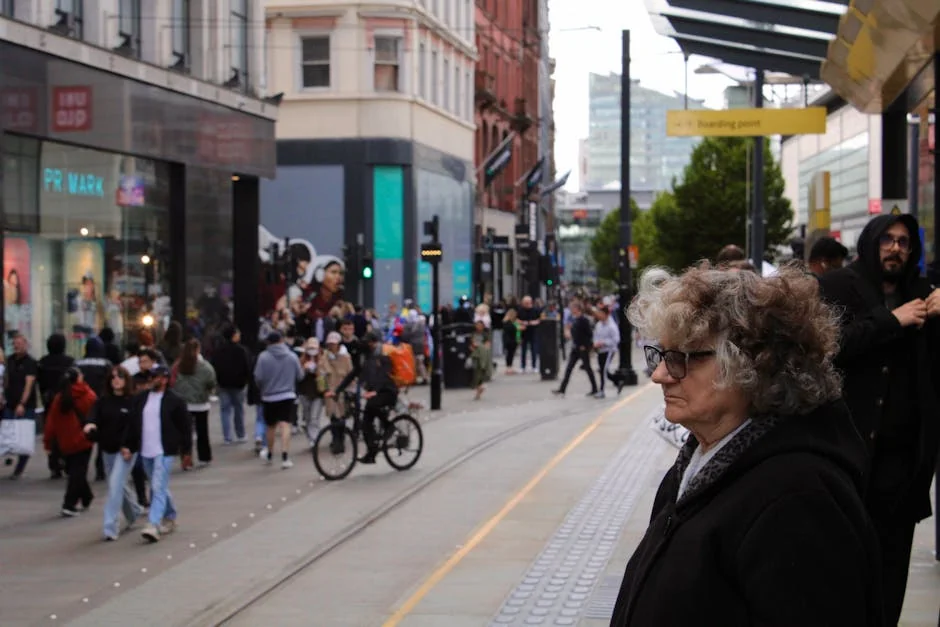Do you ever feel the weight of it all? The lingering sting of a past hurt, the tight coil of anxiety about the future, or the exhausting grip of a grudge you just can't seem to release? This mental and emotional clutter doesn't just live in your mind; it settles in your shoulders, knots your stomach, and drains your energy. Holding on can feel like a form of control, but in reality, it's the very thing that holds you back from the peace and freedom you crave.
Mastering the art of letting go isn't about losing a part of yourself or admitting defeat. It is the ultimate, courageous act of self-care—a conscious decision to make space for joy, calm, and the present moment. It’s a skill you can learn, and it begins with the right letting go techniques. This guide is your first step. We will walk through powerful, actionable methods rooted in meditation and mindfulness, giving you the practical tools you need to finally lighten your load and cultivate a more peaceful mind.
Understanding the "Why": The Psychology of Holding On
Before we dive into the techniques, it's helpful to understand why letting go feels so counterintuitive. Our brains are wired for survival, not happiness. This means we have a natural negativity bias—we cling to painful memories and potential threats because, from an evolutionary standpoint, remembering what hurt us once helps us avoid it in the future.
We also form strong attachments to our stories. The narrative of "I was wronged" or "I am a failure" can become intertwined with our identity. Letting go of the pain can feel like we're letting go of a part of who we are, or worse, that we're excusing someone else's behavior. This isn't the case. Letting go is about releasing the emotional charge and the control the story has over you, not about denying the event happened. Understanding this mental clutter is the first step toward using mindfulness practices to consciously rewire these deep-seated patterns.
Foundational Practice: Anchoring Yourself with Breath Awareness
You cannot let go of what you aren't aware of. Trying to release anxiety or a grudge without first calming your nervous system is like trying to untangle a knot while you're still shaking. This is why breath awareness is the non-negotiable foundation for all other letting go techniques.
Your breath is an anchor to the present moment. When you focus on it, you pull your mind away from the past and future and into the safety of "now." This simple act creates a small space between you and your reactions, allowing you to respond from a place of calm rather than impulse. This is a core component of any practice for meditation to clear the mind.
A Simple 5-Minute Breath Awareness Practice:
- Find a comfortable seated position, either on a cushion or a chair, with your spine straight but not rigid.
- Gently close your eyes or soften your gaze.
- Bring your attention to the physical sensation of your breath. Don't try to control it; just feel it.
- Notice the cool air entering your nostrils and the slightly warmer air leaving.
- Feel your chest and belly gently rise and fall.
- When your mind inevitably wanders (which it will!), gently and without judgment, guide your attention back to the breath. This act of returning is the practice.
This cultivates the "observer" mindset—the part of you that can watch your thoughts and feelings without being swept away by them. Practice this daily to build your capacity for present moment awareness.
Technique 1: The Body Scan for Releasing Physical Tension
Our bodies are living archives of our emotional experiences. That argument from last week might be stored as tight shoulders, while financial anxiety might manifest as a churning stomach. The body scan is a powerful meditation for acceptance that helps you locate and release this stored tension, literally teaching your body how to let go.
This practice moves your focus systematically through different parts of your body, bringing a kind and curious awareness to each area.
How to Practice a Body Scan:
- Lie down on your back or sit in a comfortable chair. Close your eyes and take a few deep breaths to settle in.
- Bring your awareness to the toes of your left foot. Notice any sensations—tingling, warmth, pressure, or even numbness. Without judgment, simply observe.
- On your next exhale, imagine you could release any tension in your toes. Visualize it melting away.
- Slowly, methodically, move your awareness to your left foot, then your ankle, calf, knee, and thigh, repeating the process of noticing and releasing on the exhale.
- Continue this journey through your entire body—your right leg, torso, back, fingers, arms, shoulders, neck, and head.
- If you encounter an area of strong tension or emotion, don't fight it. Breathe into that space. Imagine your breath flowing directly to that tightness, softening it with each exhale.
This technique is profoundly effective for releasing emotional baggage that has taken up physical residence in your body.
Technique 2: Observing and Releasing Thoughts with Mindfulness
The core of our suffering is often not the thought itself, but our entanglement with it. We believe our thoughts, argue with them, and get carried away by them. This technique, a form of mindfulness meditation, teaches you to see your thoughts as passing mental events, not absolute truths.
The goal is not to empty your mind, but to change your relationship with its content.
Practicing Thought Observation:
- Sit in meditation with your breath as an anchor.
- As thoughts arise, imagine them as:
- Clouds drifting across the sky of your mind.
- Leaves floating down a stream.
- Trains passing through a station.
- Simply notice the thought. You might gently label it: "Ah, there's a worrying thought," or "There's a memory."
- Resist the urge to follow the thought down its rabbit hole. Acknowledge its presence, then gently return your attention to your breath or the next "cloud" drifting by.
By practicing this dis-identification, you strip the thought of its power. You realize you are the sky, not the cloud. This is the essence of releasing negative thoughts without force or struggle.
Technique 3: The RAIN Method for Difficult Emotions
When a particularly strong emotion like anger, fear, or shame arises, it can feel all-consuming. The RAIN method, developed by mindfulness teacher Michele McDonald, is a beautiful, structured meditation for acceptance that guides you through working with intense feelings. It’s one of the most powerful letting go techniques for emotional healing.
RAIN is a four-step acronym:
R - Recognize: The first step is to simply recognize what is happening. Name the emotion silently to yourself. "This is anger." "This is fear." "This is sadness." Recognition creates immediate distance.
A - Allow: This is the step of non-resistance. Instead of trying to push the emotion away or getting lost in it, consciously allow it to be there. You might say, "It's okay. I allow this anger to be present." This doesn't mean you like it; it means you are ceasing the internal war against your own experience.
I - Investigate: With gentle curiosity, bring your attention into your body. Where do you feel this emotion most strongly? What are the physical sensations? Is it heat, tightness, trembling? Also, inquire what this emotion might need. Is it seeking safety? Acknowledgement? Love?
N - Nurture (or Non-Identification): The final step is to offer care to the part of you that is hurting. You might place a hand on your heart and offer a kind phrase like, "May you be safe," or "It's okay, I'm here with you." This step actively cultivates self-compassion. The "N" can also stand for Non-Identification, reminding you that this emotion is a passing experience, not your core self.
Technique 4: Writing to Release: The Power of a Letting Go Ritual
Sometimes, thoughts and emotions need a physical outlet. Journaling is a potent way to get the mental clutter out of your head and onto the page, where you can see it more objectively. This can be a powerful ritual for releasing emotional baggage and gaining clarity.
A Simple Letting Go Writing Exercise:
- Set a timer for 10-15 minutes.
- Write continuously about what you want to let go of. Don't edit or judge your words. Let it all out—the anger, the sadness, the story, the confusion.
- Once you feel complete, you can choose a symbolic ritual to signify release. Safely burn the paper (in a sink or firepit), tear it into pieces, or even flush it down the toilet. As you do, consciously state your intention to let this go.
The act of physically destroying the paper serves as a powerful signal to your subconscious that you are ready to move on.
Technique 5: Loving-Kindness for Releasing Resentment
Holding a grudge is like drinking poison and expecting the other person to get sick. Resentment ties you to the person who hurt you. Loving-Kindness meditation (or Metta) is a revolutionary letting go technique that dissolves the bonds of resentment by actively cultivating forgiveness and goodwill. For a beautiful variation on this practice, you can explore go love meditation.
You start by offering kind wishes to yourself and gradually extend them outwards, even to difficult people.
A Loving-Kindness Practice:
- Sit quietly and bring yourself to mind. Repeat these phrases (or your own), feeling the intention behind them:
- May I be happy. May I be healthy. May I be safe. May I live with ease.
- Next, bring to mind a "benefactor"—someone who has been kind to you. Offer them the same phrases.
- Then, bring to mind a neutral person—someone you see but don't know well.
- Now, the crucial step: bring to mind the "difficult person." This is challenging. Acknowledge any resistance, and gently offer the phrases anyway: "May you be happy. May you be healthy. May you be safe. May you live with ease."
- Finally, extend these wishes to all beings everywhere.
This practice isn't about condoning harmful behavior. It's about freeing yourself from the prison of bitterness. By wishing peace for others, you ultimately find it within yourself.
Integrating Letting Go into Your Daily Life
Letting go isn't just for the meditation cushion; it's a moment-to-moment practice. You can use mini-versions of these letting go techniques throughout your day.
- The 3-Breath Reset: When you feel stressed, pause and take three conscious breaths. On each exhale, mentally whisper "Let go."
- Emotional Check-Ins: Set a random alarm on your phone. When it goes off, ask yourself, "What am I holding onto right now that I can release?"
- Physical Shake-Out: Literally shake your hands and body for 30 seconds to discharge nervous energy and physical tension.
Letting go is a journey, not a destination. It’s a muscle you build with consistent practice. Some days will be easier than others, and that's perfectly okay. The goal is not perfection, but progress. By returning to these mindfulness practices again and again, you train yourself to live with more lightness, more freedom, and more peace. Start with one technique that resonates with you, practice it with compassion, and watch as you slowly, surely, master the art of letting go.
Ultimately, the journey of letting go is a profound act of self-liberation. As we have explored, this process is not about erasing the past or suppressing emotions, but about consciously releasing the mental and emotional attachments that keep us tethered to suffering. The techniques—from mindfulness and letting go and journaling to cognitive reframing and radical acceptance—provide a practical toolkit for this internal work. Each method underscores the same core truth: peace is found not by controlling life’s events, but by changing our relationship to them. Letting go is a courageous choice to make room for new growth, unburdened by what we cannot change. This is a skill that deepens with consistent practice, transforming a challenging concept into a lived reality. Begin by integrating just one small technique into your daily routine. Be patient and compassionate with yourself, for every conscious release, no matter how minor it seems, is a step toward greater freedom and a more resilient, peaceful you.



